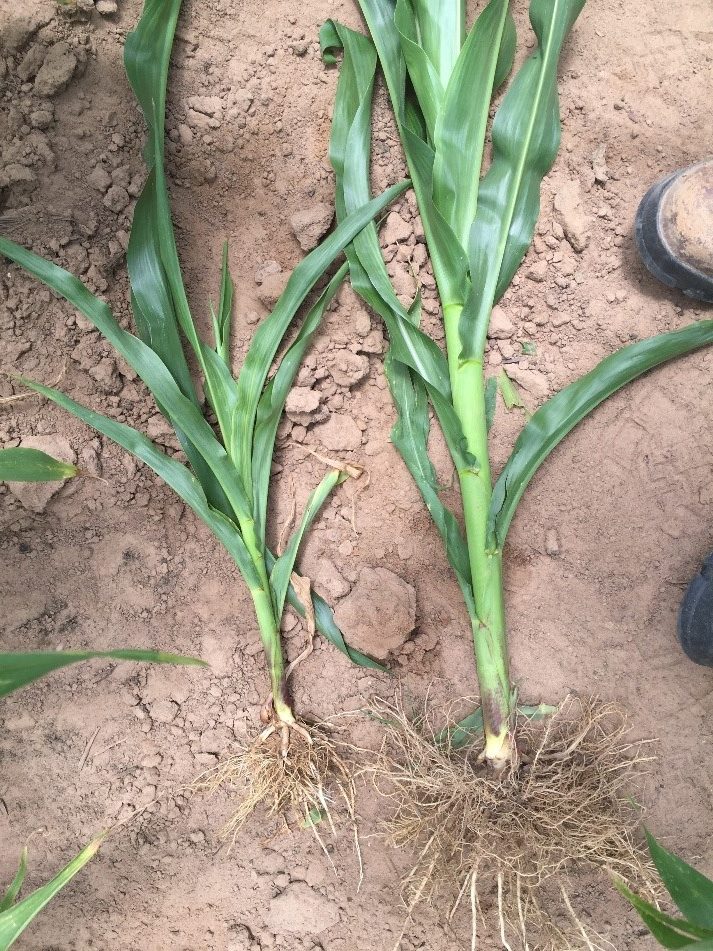by Tony Provin, Professor and Extension Soil Chemist and Ronnie Schnell, Assistant Professor and Extension Specialist-Cropping Systems
ronschnell@tamu.edu
The era of remote sensing, aerial drones, satellite imaging and GPS/GIS has most producers focusing on the visible issues present in their fields. The Soil Health movement is attempting to increase the awareness of the functions of soil and how to enhance or maintain our nation’s most critical natural resource. Whether it’s Texas or the central corn-belt, the root of most problems (pun intended) is actually roots, or lack of. The yield potential of all agricultural crops can always be traced back to the soil. Soil conditions that limit root development and proliferation throughout the topsoil and subsoil, ultimately limit the yield and long-term sustainability of the field. Sadly, our ability to access rooting development has remained nearly static for the past fifty years, although numerous researchers and industry technicians have been working to improve our ability to determine in field root development.
Key strategies toward avoiding compaction are to: 1) reduce axle loads when-ever possible, 2) avoid tillage or movement of equipment when soils are moist or wet on the surface and deeper in the profile, 3) Use controlled wheel tracks, thus limiting the overall percent of the field that large axle/wheel loads impact and 4) insure other soil fertility related limitations are resolved. The tillage and wheel traffic on moist and wet soils is often the more immediate and most obvious form of compaction. This wheel traffic compaction is often associated with shorter plants nearby and also immediate ponding during rainfall events.
Remediation of compaction can be difficult, expensive and may require years of careful attention to a given field or area within a field. The first step in remediating compaction is to determine where and to what extent a field is compacted. While yield monitors and visual observations can provide some insight into potential areas of compaction, a simple soil probe used in the process of collecting soil samples can quickly be used to evaluate ease of penetration, depth of hardness layers and changes between areas of the field. When compacted areas are noted, a further understanding of the compaction depth is needed. Longer soil probes or soil penetronometers can be utilized to evaluate the depth of compaction. Most compaction problems can only be reduced by mechanical means, including deep ripping, chiseling or other fracturing of the soil when dry. Another approach is to plant a taproot type of cover crop such as sweet clover. Select legumes, including sweet clover, are uniquely adapted to penetrate through compacted layers, although this may require multiple plantings.

Figure 2. Percent of soil test samples that fall below the critical level for soil test P (Phosphorus). Accessed from IPNI at http://soiltest.ipni.net/about/about_soil_test_summary.
Non-optimal soil fertility is also to blame for poor rooting of annual and perennial crops. Over the past twenty years, the percentage of soil samples with limited phosphorus or potassium has risen significantly. Most recent estimates (2015) are that 83% of Texas fields are limiting with regard to phosphorus and with the number of samples limiting for P is increasing with time. Additionally, a significant increase in the acreage of acidic soils has been observed throughout the central and northern Blacklands. Careful attention to timely soil testing can easily identify hidden soil fertility issues, as well as, locate those compacted areas within a given field. More information on soil testing can be found at The Texas A&M AgriLife Extension Soil, Water and Forage Testing Laboratory (soiltesting.tamu.edu).

Assistant Professor and Extension Specialist-Cropping Systems
College Station, Tx 77843
979-845-2935
ronschnell@tamu.edu
